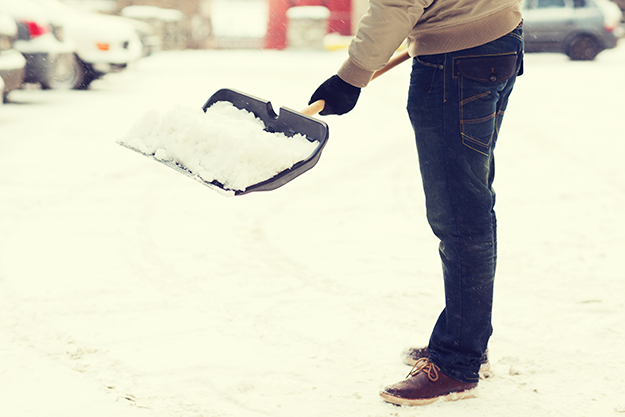How To Clear Snow Safely From Your Driveway
Posted on: 12/12/2014Looking back at the year we have been very lucky with the weather but there's still a chance of some really nasty ice and snow. There's a possibility that mounds of snow and sheets of ice will start setting up camp on our driveways making it difficult for us to walk safely to our cars or public pathways.
A lot of us are put off by clearing driveways in case someone gets injured resulting in us being held responsible for any damage but anyone who decides to walk on the snow and ice has a responsibility to be careful themselves. Don't believe in the myths, if you take our advice and clear your driveway carefully it's highly unlikely you will be found responsible for any injuries.
Successfully Clearing Your Driveway
- Start removing snow and ice in the morning rather than later in the day as it's more likely that the snow in the morning will be fresh and loose as opposed to the hard snow you'll get in the evening as it's been packed together due to people walking on it.
- Do not use hot water, this will melt the snow but will create black ice which can be very dangerous to walk or drive on.
- Wear suitable clothing such as footwear with a good grip and gloves.
- If you're shoveling snow you have to think ahead as to what you are going to do with it. Make sure it doesn't cause problems elsewhere when it melts and avoid piling snow over drains or gullies as this may stop melting snow from draining away and giving it a chance to refreeze.
- Clear a small pathway down the middle of the area you are working on, this then gives you a safe surface to walk on. By doing this means you can shovel from the centre to the sides.
- Use salt or grit on the area to prevent any ice forming but try to avoid getting this on the grass or plants.
- If you can't get hold of any salt then try a little bit of sand or ash; these may not have the same de-icing properties but should still offer a grip under your shoes.
- Take advantage of the sun – if you remove the top layer of snow this will allow the sun to melt any ice beneath. If you discover any ice you must cover it with salt to prevent the ice from re-freezing overnight.
- If it rains or there is further snowfall the salt can be washed away and then re-freeze, leaving black ice. If this happens apply more salt soon after the rain has stopped and before the temperature reaches freezing.
- If possible, sweep up any excess grit, sand or any other substances you have used when the snow has thawed out as these can block drains causing problems.
We hope these tips help you through the winter months and provide you with a safe driveway – Happy holidays!




